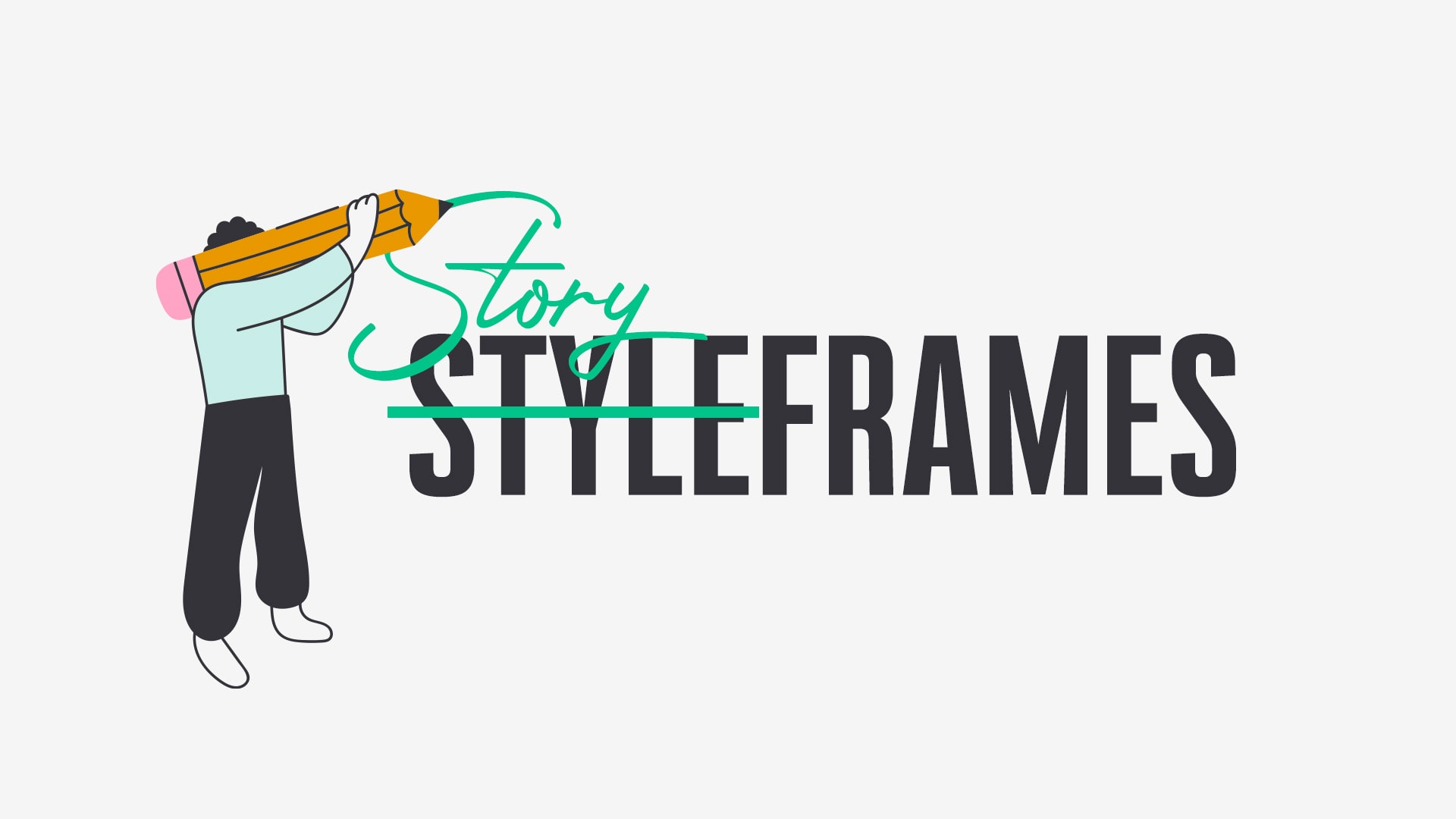Visual storytelling, in the form of Motion Design, has the incredible ability to affect an audience through captivating design and animation.
But what makes a piece stand out more than others?
The answer is in the story.
Story is something I’ve become more attuned to in recent years thanks to a combination of on-the-job problem-solving, working alongside my peers, one of my favorite authors, and discussions with guests on the Styleframe Saturdays podcast.
In fact, understanding how important story is to styleframe development was one of my main motivations for starting the podcast, but we’ll save that conversation for another occasion.
During a time when content is king and content overload is overwhelming, it’s challenging to create a piece that is memorable. And not just memorable but something that leaves your audience walking away either desiring more or incentivized to take action.
How you intentionally approach a story makes all the difference, and as with any Motion Design project, that story should be clearly defined early on. Styleframes are one way to define that story early in production. Not only will they give your client a sneak peek at what the final piece will look like, but they will also help define the story and the actions that surround it.
From hero shots to dynamic transitions, styleframes have a way of stopping time in its tracks in the most aesthetically pleasing way possible. They may be one small part of an entire project, but on their own, they act as mini stories themselves.
It’s important to remember the storyboards that precede styleframes too. If a project requires them, storyboards will be one of the first steps in defining the action of a story while teeing up styleframes and the rest of production.
But the visual crafting that takes place within styleframe development is what allows your client (and their audience) to start to visualize the story and where emotional connections can begin to form.
A well-thought-out sequence of frames is more than just design principles combined with technical know-how. The inspiration behind the digital brush strokes is what makes these pieces of art come to life.
But how do you know what inspiration to pull for your frames? How do you decide what deserves the most attention? Or, more simply put, how do you know where to start?
Below are five examples of questions you can ask yourself when creating your styleframes so that they complement your story beautifully.

1: Who is This Piece For?
This question may seem obvious, but beyond knowing the audience to which the story is being told, you should also be asking yourself about the character traits of your audience as well.
Ryan Summers – Creative Director at Spillt – talks about figuring out who the audience is.
What are their interests? What are they drawn to? What motivates them? And ultimately, how should they feel after watching this piece?
Establishing who your audience is will go hand-in-hand with the next question.
2: Who or What is the Protagonist?
Your audience should care what the story is about because they should care about your protagonist.

Protagonist and social video created for Ms. Chester of MC Marketing & Content by Formerle
Why? Well, because according to Lisa Cron, author of Wired for Story and Story or Die, the protagonist becomes the lens through which we experience the story, and a well-defined protagonist is emotionally relatable.
We see what they see and feel what they feel. Get to know your protagonist on a deep level and learn what makes them tick.
A great way to figure this out is to ask yourself, “What do they currently believe?” Once you understand their view of the world (which we’ll talk more about in a second), you can start to understand their story and why it matters to your audience.
This is what pulls your audience into your frames (and story) and will be a key factor in your design decisions.
3: What Is The Story About?
Now that we know our audience and have established our protagonist, it’s time to understand why your audience should care about the story.
As Lisa states in both Wired for Story and Story or Die, story is about how your protagonist changes.
Intro video highlighting a hero’s journey created for Training Camp Fitness by Formerle
Ask yourself, what is happening to your protagonist, and how are they impacted? What do they currently believe that is causing them to not reach their full potential? What does their internal dialogue look like?
Ironically, these questions are also the questions your audience should be asking themselves too.
By uncovering your protagonist’s POV, it becomes clear that story isn’t about the external changes that happen around the protagonist but rather the internal changes taking place instead.
But how do you personify such internal changes and emotions? That’s where your creativity kicks in.
4: What Tone or Mood Do I Need to Convey?
Now that we have a well-defined idea of what the story is about, who our protagonist is, and why our audience should care, it’s time to address the tone of our frames and, ultimately, our story.
- What colors will you use to convey the tone?
- How will you frame your compositions?
- How will you portray your protagonist so that the audience relates to them?
- Which camera tricks will you utilize?
- How will you use hierarchy to guide your viewer’s eye?
Illustrator Tristan Henry-Wilson, on how color value and framing contribute to the overall effectiveness of a piece.
It’s time to put those design principles and cinematography skills into practice. But remember, use them wisely. Strike a balance and make sure your creative decisions continue to support your answers to the above questions.
5: What Visuals Will Compliment This Story?
With our story and mood established, it’s time to figure out which objects will have the most emotional impact.
- Will you tell your story literally or metaphorically?
- Which items will you pull out of your toolkit to get the job done?
- Will it be characters? Objects? Textures? Typography? 2D? 3D? Live-action footage? Design? Illustration?
The world truly becomes your oyster here. And as Motion Designers, we know that this is where the magic happens. We’re building the bridge that connects the narrative to the visual.
Grace Pedersen – Art Director at Ordinary Folk – deciding on a more human and illustrative style for one of their main characters.
But why didn’t we just jump into design from the very beginning?
Because without the story fully defined, we would simply be making pretty pictures, and as we learned earlier, pretty pictures alone won’t incentivize an audience to take action; however, story does.
Understanding why story matters is the key to creating meaningful styleframes and an impactful piece. When thoughtfully approached, story has the potential to shift a piece from recognizable to iconic.
By studying the elements of a great story, while practicing the craft of Motion Design, we have the profound opportunity to make something not just noteworthy but truly unforgettable.
About the Author

Caroline Le is the host of the Styleframe Saturdays podcast and is also the Founder of and Creative Director at Formerle. Styleframes have always been her favorite part of production, and having admired the frames of others that sometimes didn’t make the final cut, Caroline wanted to find a way to both highlight this vital part of production and celebrate the artists behind the frames. As a result, a podcast and a community of styleframe enthusiasts was born, with the purpose of understanding why certain creative decisions are made and how those decisions contribute to a larger story.




